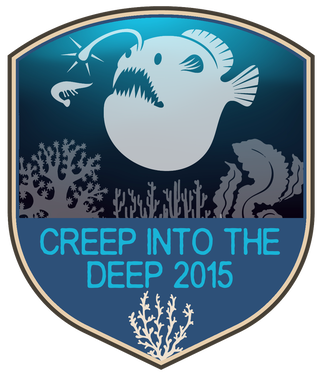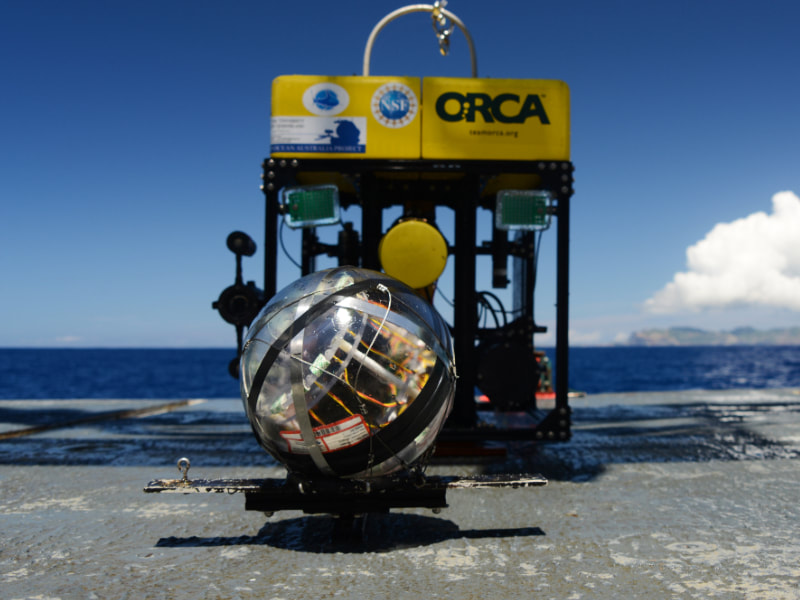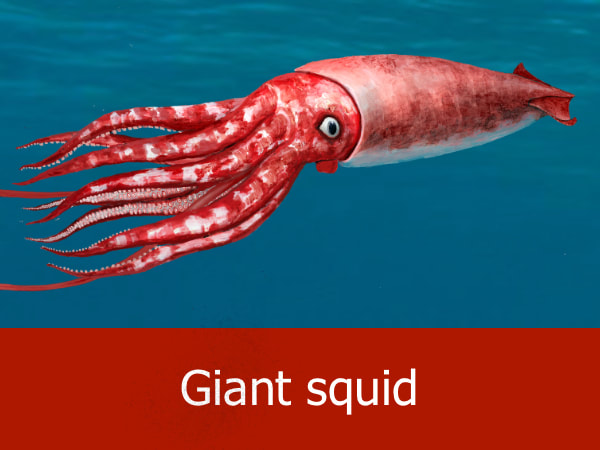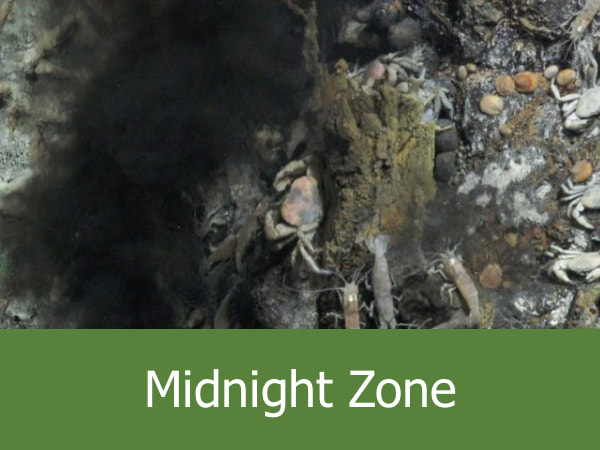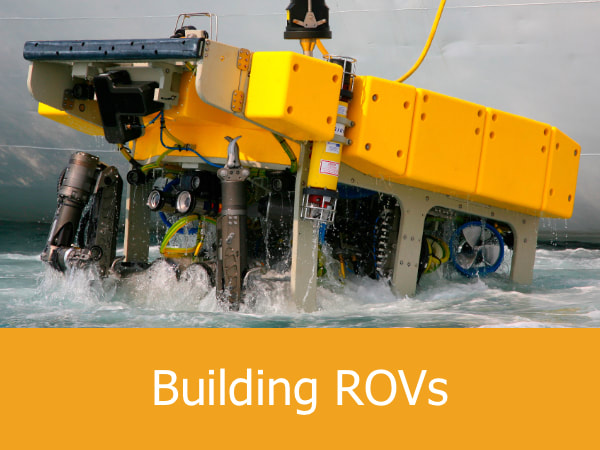Navigate:VIRTUAL EXPLORATIONS > ARCHIVED EXPLORATIONS > CREEP INTO THE DEEP 2015
|
Part 8: Meet the Medusa, The Latest In Deep-Sea Tech
Guest Contributor: Dr. Edith Widder, Marine Biologist and Deep-sea Explorer
Posted July 24, 2015: Yesterday I shared a little about ship life. Now I’ll share a bit about my latest research tool, the Medusa. Today is the fifth day of our cruise and the Medusa is on her second drop. This is the first time for the Medusa to be in the Gulf of Mexico. The Medusa was the first camera to capture the live images of the giant squid in the Pacific in 2012. (See the TED Talk video below for more about this discovery.) |
The Medusa is a camera system designed to explore the deep sea in a new way — one that focuses on attracting animals instead of scaring them away. I became interested in a different way of exploring after many years of diving in submersibles and using Remote Operated Vehicles (ROVs). Both convinced me that animals were avoiding the bright lights and noisy thrusters on these standard exploration platforms.
My solution was a camera platform that was quiet and that could see without being seen by illuminating with red light that is invisible to most deep sea animals and that used an optical lure. What’s an optical lure? It’s a ring of dim blue lights that imitates the bioluminescent burglar alarm display of a deep-sea jellyfish. The burglar alarm might startle the predator and entice bigger predators to swoop in for a quick meal of the would-be predator. When the e-jelly on the Medusa lights up, it lures animals closer so we can capture them on video.
It has been remarkably successful. In fact, the first time I tested it in the Gulf of Mexico 11 years ago it recorded video of a large squid that was completely new to science!
My solution was a camera platform that was quiet and that could see without being seen by illuminating with red light that is invisible to most deep sea animals and that used an optical lure. What’s an optical lure? It’s a ring of dim blue lights that imitates the bioluminescent burglar alarm display of a deep-sea jellyfish. The burglar alarm might startle the predator and entice bigger predators to swoop in for a quick meal of the would-be predator. When the e-jelly on the Medusa lights up, it lures animals closer so we can capture them on video.
It has been remarkably successful. In fact, the first time I tested it in the Gulf of Mexico 11 years ago it recorded video of a large squid that was completely new to science!
The Medusa doesn’t have to be set on the bottom using a submersible or ROV. Instead it is lowered over the side of the ship and let go. Once it is unhooked from the crane, it sinks to the bottom. The Medusa is about the size of a dishwasher and weighs about 300 lbs. It can go as deep as 6,562 feet (2,000 m). It takes about 2 hours for the Medusa to sink to that depth.
We can’t direct it to a particular location like we can an ROV or a submersible. We just have to position the ship over a region of interest and hope it lands in a good spot. Once it lands, it sits there quietly recording for one to two days. When we are ready to recover it, we position the ship near where we dropped it. Then we send an acoustic signal that triggers it to drop (let go of) a 75 lb weight. Without the weight, the Medusa should float to the surface. It takes another 2 hours to return from the deep.
We can’t see what it is recording while it is on the bottom so there’s always a lot of excitement once we get it back to see what new animals or new behaviors it might have witnessed.
It’s recorded some pretty amazing things including the first video ever recorded of a giant squid in the deep sea. We probably won’t see any giant squid on this mission but I’m always hopeful that we’ll see something completely new and exciting.
It’ll be exciting to see what the Medusa saw in the deep!
We can’t direct it to a particular location like we can an ROV or a submersible. We just have to position the ship over a region of interest and hope it lands in a good spot. Once it lands, it sits there quietly recording for one to two days. When we are ready to recover it, we position the ship near where we dropped it. Then we send an acoustic signal that triggers it to drop (let go of) a 75 lb weight. Without the weight, the Medusa should float to the surface. It takes another 2 hours to return from the deep.
We can’t see what it is recording while it is on the bottom so there’s always a lot of excitement once we get it back to see what new animals or new behaviors it might have witnessed.
It’s recorded some pretty amazing things including the first video ever recorded of a giant squid in the deep sea. We probably won’t see any giant squid on this mission but I’m always hopeful that we’ll see something completely new and exciting.
It’ll be exciting to see what the Medusa saw in the deep!

